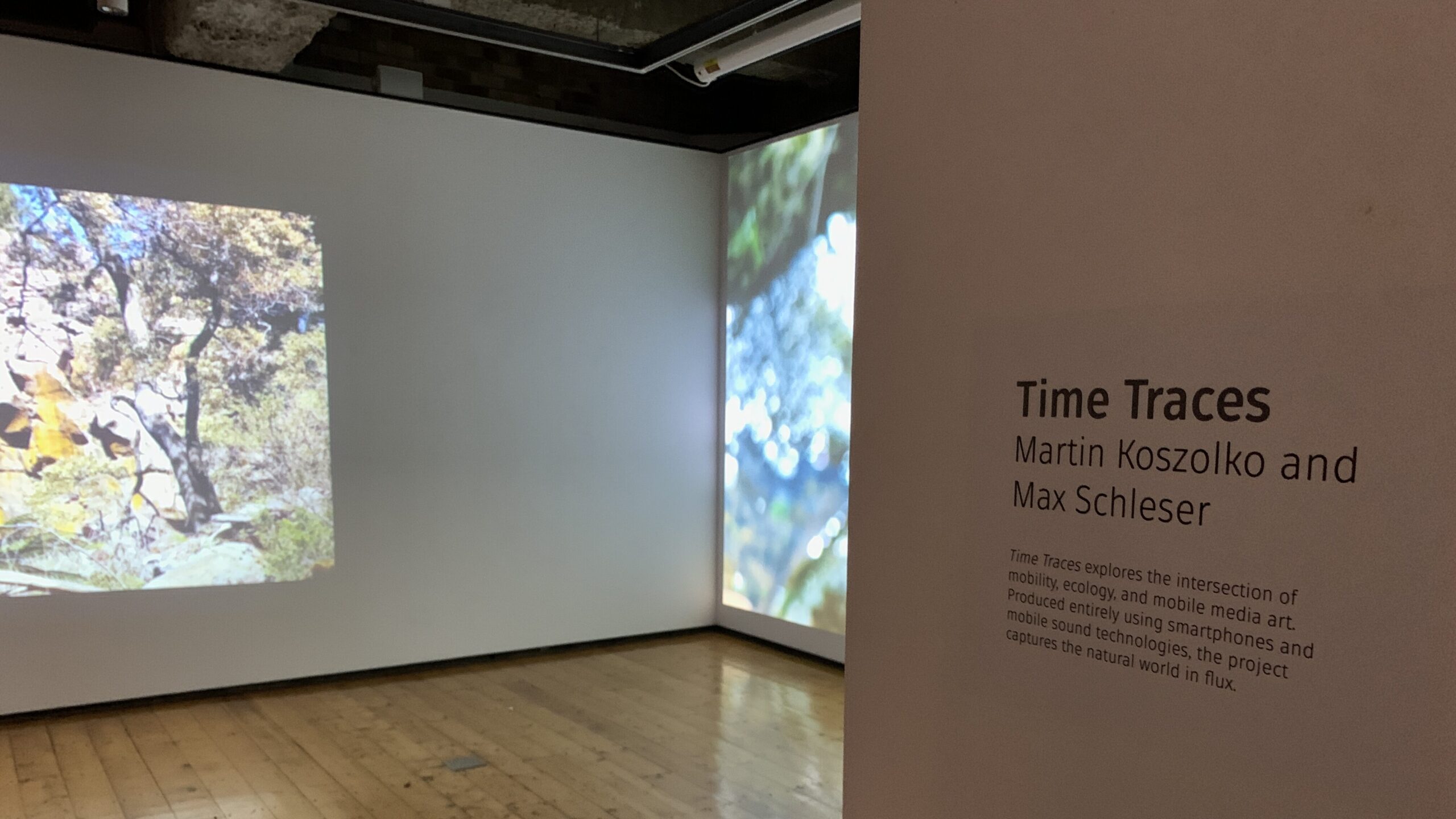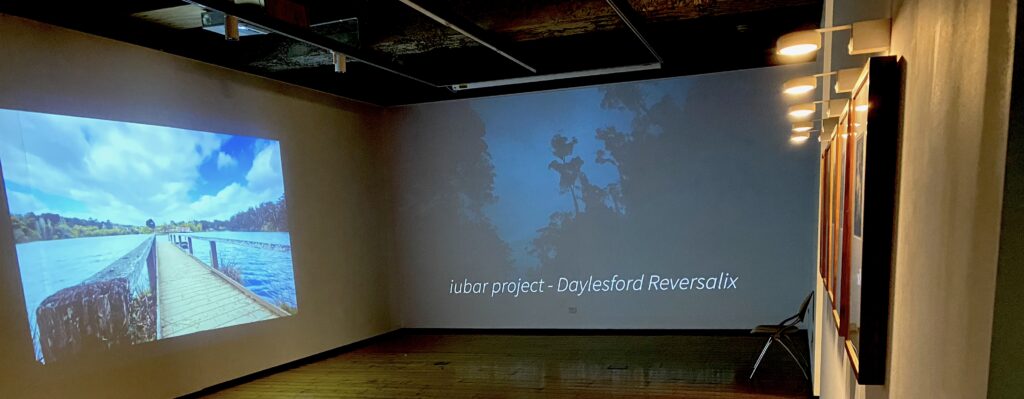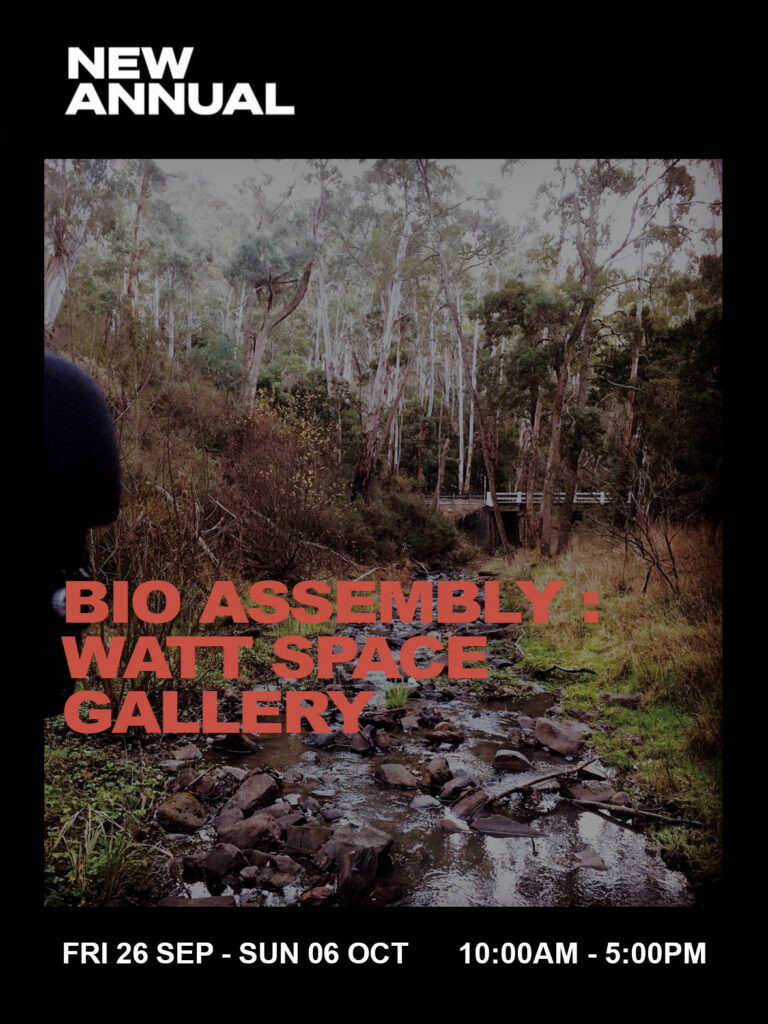Time Traces premiered at the New Annual Festival in Newcastle as part of Bio Assembly, a group exhibition bringing together seven artists whose works explore the intersections of landscape, space, ethics, and entropy.
From Field Recordings to Installation: The making of Time Traces
Time Traces is an experimental audiovisual installation developed with Max Schleser, the founder of MINA. As my first gallery installation, it represents both a personal and creative milestone. The work explores the ecocritical dimensions of mobile media production through the lenses of mobility and temporality, positioning nature as both subject and collaborator. Produced entirely with mobile technologies, Time Traces considers how artistic creation in motion can express subjective connections to place and environment.

Our installation occupied a large section of the gallery and featured three audiovisual projections alongside five limited-edition manipulated digital photographs. Audio was available through the gallery’s speaker system, with one exception: headphones were provided for close listening to the works presented on the gallery’s largest screen, Daylesford Naturalix and Daylesford Reversalix. These two musical pieces, built entirely from field recordings captured during the pandemic while I was living in Daylesford, Victoria, offer an intimate sonic reflection on that time and place. The compositions are accompanied by Max’s evocative visuals, also filmed in Daylesford, creating an immersive audiovisual experience.

Conceptually, Time Traces can be understood as an ecocritical dérive, a reflective journey through sound and image that explores the passage of time and the links between environment, technology, and artistic process. The visuals, moving clouds and concentric rings of trees, intertwine with sonic textures of birdsong, flowing creeks, and waterfalls. Together, these elements form dynamic time traces of ecological rhythms and human engagement.
The project’s iterative process developed through an extended creative dialogue between Max and me: beginning with my iubar project Daylesford Naturalis field recording album, followed by Max’s visual reinterpretation of the site, and culminating in iubar project’s Daylesford Naturalix and Daylesford Reversalix compositions created through granular synthesis and sample manipulation. This exchange forms the conceptual and aesthetic core of our work, grounded in mobile art aesthetics and ecologically engaged screen production.
New Annual opening night

New Annual is Newcastle’s flagship art, music and ideas festival and this year’s opening night was a major event, offering guests a preview of Bio Assembly. Speeches were delivered by the Hon. Yasmin Catley, the Federal Minister, and Newcastle’s Mayor, Ross Kerridge, both highlighting the importance of contemporary art and culture. The following days featured a dedicated Bio Assembly exhibition launch and the artist talk Harvesters – Employing the Elemental in Practice. Both events provided an engaging setting for discussing the role of the elemental in creative processes with fellow artists Sandy Sanderson, Tim Merrikin, Louisa Magrics, Marie Hadley, and Adam McDade.

Extended dates and a new exhibit in Victoria
Although the New Annual Festival has now concluded for another year, the exhibition featuring Time Traces has been extended and continues until 15 November 2025 at Watt Space Gallery, Newcastle, Australia. At the same time, the musical and related visual components of Time Traces—Daylesford Naturalix and Daylesford Reversalix—are being exhibited in Hepburn Springs, Victoria, at Radius Art Space as part of the Swiss Italian Festa Landscape Art Show. Hepburn Springs is only a couple of kilometres from Daylesford, so it’s exciting to share this work with audiences in the region where it was first conceived and recorded.
If you’re in Newcastle or Hepburn Springs, I hope you can visit these exhibitions to experience a space for reflection, connection, and the chance to listen, observe, and trace the quiet patterns of time within the natural environment.
Martin



